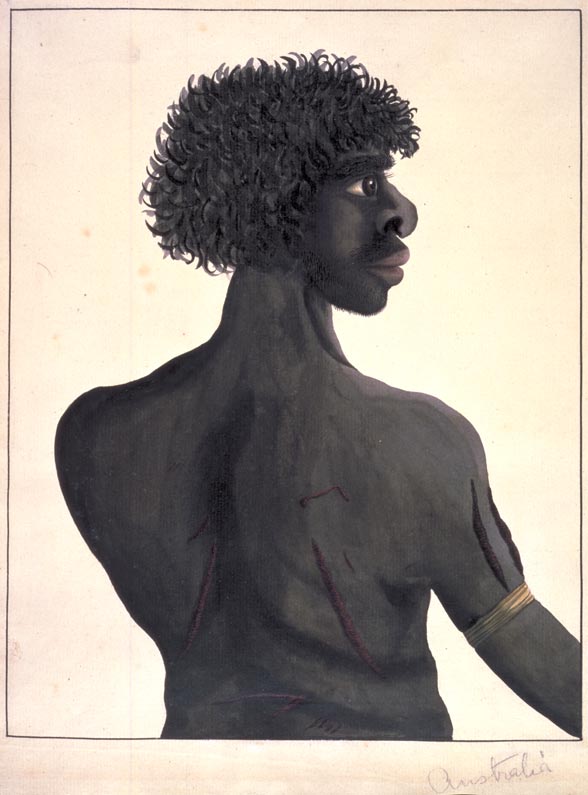 Portrait of an Indigenous Australian man, c1790
Portrait of an Indigenous Australian man, c1790
TLF ID R4033
This is a portrait of an Indigenous Australian man from the Port Jackson (Sydney) area of New South Wales, created in about 1790 by an unknown artist. The man is shown from the waist up, standing with his back to the viewer and his head turned to the right-hand side. The man's facial features are exaggerated and his back and arm feature raised scars. Measuring 29.4 cm x 24.0 cm, the portrait was painted in gouache (watercolours mixed with gum).
